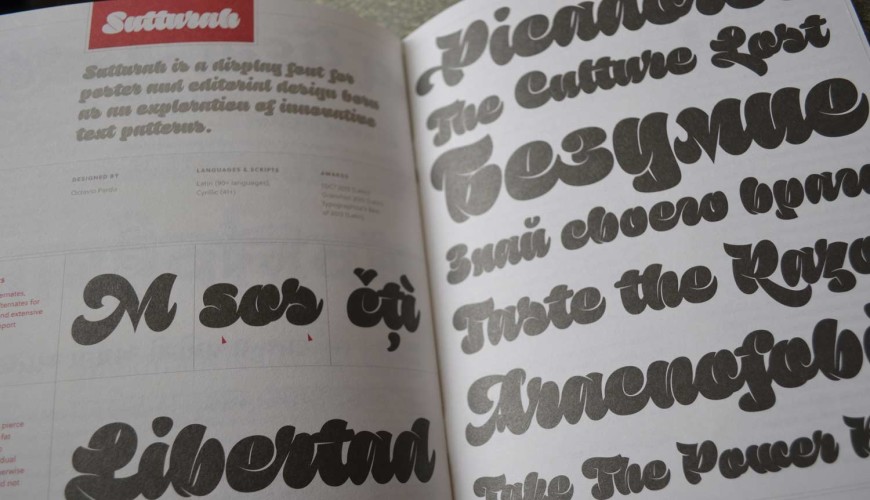That’s a significant number. Should be interesting to see where they’re at next year and I wouldn’t be surprised if they tip the 50% marker.
Archives page: 8
Typography in 10 minutes
If you learn and follow these five typography rules, you will be a better typographer than 95% of professional writers and 70% of professional designers.
The world would be a better place if everyone would take ten minutes to read this.
Alex Turnbull from Groove:
Start blogging, right now. It’s the single highest-return strategy that we’ve used for user acquisition.
It’s hard to argue with numbers.
(Via Ian Stewart)
Jon Gruber on the PC market:
The time has come to simply acknowledge that the PC era peaked two years ago, and has started to irreversibly contract. The only question is how fast.
Yep.
Jonathan Stark talks about the Entertainment Weekly Redesign:
When you are designing a responsive site, it’s best for all involved to get working prototypes in front of stakeholders early and often.
This seems so obviously true in my experience. Talking about a responsive implementation of a desktop design, or showing comps for various break points just doesn’t work. You need to get it in peoples hands so they can see how things change and adapt on different screens and devices.
Media Temple Acquired by Godaddy
GoDaddy has been transformed in recent months and is essentially a new company.
How a company becomes ‘essentially new’ in a few months takes a stretch of the imagination. It’s hard to forget SOPA and Godaddy’s full support of the bill before everyone on the Internet voiced their opinion about it. At any rate I’m relieved that I all ready migrated my sites off of Media Temple earlier this year and by chance remain a non-customer of GoDaddy.
Friends Don’t Let Friends Use Conditional Comments
Conditional comments have allowed us to serve CSS for a specific version of Internet Explorer for years now and they are still widely popular. I’m going to discuss why I think people are still using them and try to convince you that it’s safe to start building your projects without them.
Even Microsoft has abandoned support for conditional comments. I assume many developers still use them primarily because we’re so used to having them as a crutch to fall back on when things aren’t looking right in that browser. We’ve developed workflows around fixing things for Internet Explorer and using conditional comments is a dead simple approach to target specific versions of that browser everyone loves to hate; and it works really well. It’s also an easy technique to explain to other developers that need to maintain or contribute to your code, but aren’t experts at CSS. Another reason is that they’re wildly popular and included in many frameworks that many developers use to start their projects, like Twitter Bootstrap and HTML5 Boilerplate.
Subsequently they’re also used in websites that get a lot of traffic from HTML and CSS developers and these are the kind of folks that like to look under the hood and see how others developers are writing code. A List Apart is one such example that I imagine a lot of developers have taken a peak at.

What you’ll find at the top is the industry standard, conditional comments. The site includes 5 separate conditional comments for IE yet only use one of those selectors in their CSS a total number of one time. The surprising part is that it’s not for IE7 or IE8, but actually for IE9. Many developers see this code and will look to it as an example, but I don’t think this is the right approach. Especially since the browser landscape is changing so much more quickly now than it did just a few years ago.
Popularity and old habits aren’t the best ways to approach building a website though. We can get away from this pattern by using feature detection libraries like Modernizr to target browsers lacking specific features rather than a few very specific Microsoft browsers.
If you’re writing HTML5 markup and not using Modernizr yet and you are supporting older versions of IE, then you’re most likely using the HTML5 shim nested in a conditional comment so other browsers don’t download and run the script. At any rate you don’t need to include both as Modernizr includes the shim and smartly serves it to browsers that don’t support HTML5 tags. I see people doing this though. It does this all without resorting to the non-standard conditional comments.
We can use this feature detection to target specific versions of IE that lack support for a specific CSS property and remove conditional comments altogether. The first step is to determining what browsers you’re going to support. Do this by looking at your analytics to determine what browsers your users are viewing your site on. Then see what features those browsers are unable to support (can I use is great for this) and use those non-supported features to write targeted CSS. For IE 7 and less, box-sizing isn’t supported and since that’s something I want to use in my development, I can target IE7 by using a no-boxsizing CSS selector all without ever resorting to a conditional comment. For IE8 I use the mediaqueries selector, because I generally write up a desktop specific stylesheet for browsers that don’t support media queries.
The selectors you choose to use is up to you, but I recommend using feature detection as a way to move forward and letting go of a relic of the past.
Sass website redsesign
Team Sass Design goes at with a sharp new look for sass-lang.com. Overall it’s a bit less in-your-face sassy, but it’s refreshing and those glasses are brilliant.
Rosseta Type Specimin

Type specimen No. 1 from Rosetta. Like all the fonts in their collection, it’s super nice. Free for the cost of shipping or the PDF is available for download.
Mark Otto on CSS inheritance:
#noparents is more than an emotionally charged hashtag to express your individuality and independence as an angsty teenager. Turns out it makes a lot of sense when writing CSS, too.
Jonathan Snook also talks about this in his book, which I recommend you check out if you’re a CSS developer.
